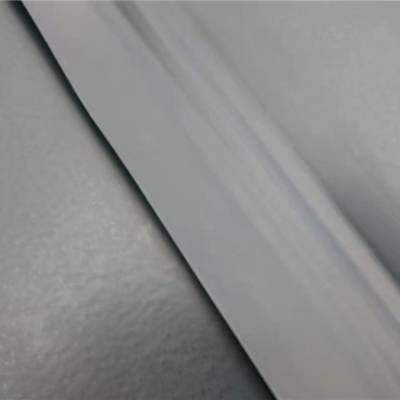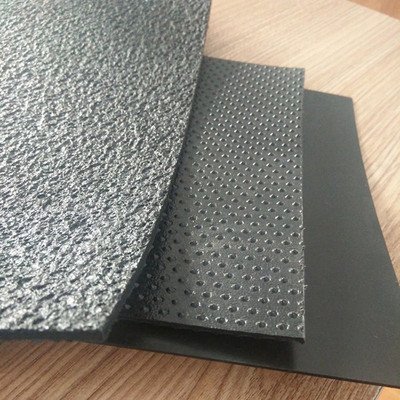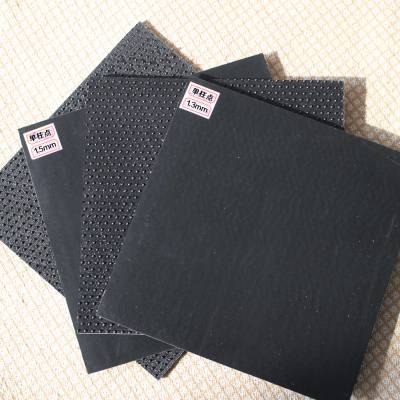Rough geomembrane
Short Description:
Rough geomembrane is generally made of high-density polyethylene (HDPE) or polypropylene as raw materials, and is refined by professional production equipment and special production processes, with a rough texture or bumps on the surface.
Rough geomembrane is generally made of high-density polyethylene (HDPE) or polypropylene as raw materials, and is refined by professional production equipment and special production processes, with a rough texture or bumps on the surface.

Types
Single-rough geomembrane: It is rough on one side and smooth on the other side. In the slope anti-seepage project construction, the rough side is usually facing up to contact with the geotextile to achieve the anti-slip effect.

Double-rough geomembrane: Both sides are rough. When in use, both the upper and lower sides can be in contact with the geotextile for anti-slip purpose, and it is widely used.

Dotted geomembrane: There are uniform bumps on one or both sides. The bumps are evenly distributed and look nice. It can be applied in slope anti-seepage projects to play the roles of anti-seepage, anti-slip and anti-contamination.
Performance Characteristics
High Friction Coefficient: The rough texture or bumps on the surface can greatly increase the friction with other materials (such as geotextiles, soil, etc.), effectively prevent the geomembrane from sliding on steep slopes or vertical surfaces, and improve the stability of the project. It is suitable for anti-seepage projects on steep slopes such as landfills and dam slopes.
Good Anti-seepage Performance: Like smooth geomembranes, it has an extremely low permeability coefficient and can effectively block liquid penetration, preventing water loss or pollutant diffusion. It can be used in water conservancy, environmental protection and other projects with high anti-seepage requirements.
Chemical Stability: It has excellent chemical stability and can resist the corrosion of more than 80 kinds of strong acid and alkali chemical media such as acids, alkalis and salts. It can maintain stable performance in engineering projects with different chemical environments, such as in sewage treatment and chemical reaction tanks.
Anti-aging Performance: It has excellent anti-aging, anti-ultraviolet and anti-decomposition abilities and can be used exposed. The service life of the material can reach 50 - 70 years, which can provide a reliable guarantee for long-term anti-seepage projects.
High Mechanical Strength: It has high tensile strength, tear resistance and puncture resistance, as well as excellent elasticity and deformation ability. It can adapt to expanding or shrinking base surfaces and effectively overcome the uneven settlement of the base surface.
Application Scenarios
Environmental Protection Projects: In landfills, it is used for the anti-seepage of the surrounding slopes and the bottom to prevent landfill leachate from leaking and polluting the soil and groundwater. It can also be used for the anti-seepage of heap leaching ponds and tailings linings in the mining industry to avoid the leakage of harmful substances.
Water Conservancy Projects: It is used for the slope anti-seepage of reservoirs, dams, channels, etc., which can prevent water leakage. Meanwhile, in high-slope positions, its anti-slip performance can ensure the stability of the geomembrane.
Transportation Projects: It can be used for the anti-seepage of tunnels on highways and railways, as well as for the protection of subgrade slopes with special anti-slip and anti-seepage requirements.
Agricultural Projects: It is applied in the anti-seepage of the slopes and bottoms of aquaculture ponds, which can maintain the water level, prevent water leakage and soil pollution, and is also convenient for the construction and maintenance of aquaculture facilities.














